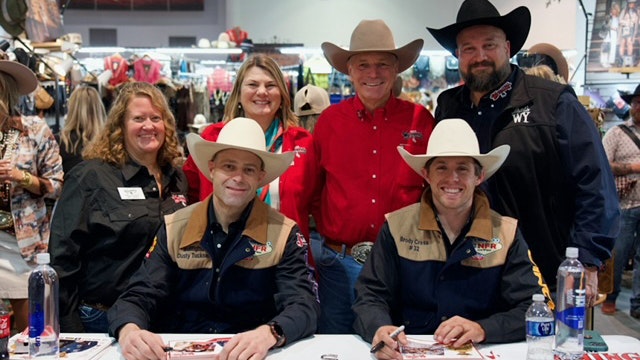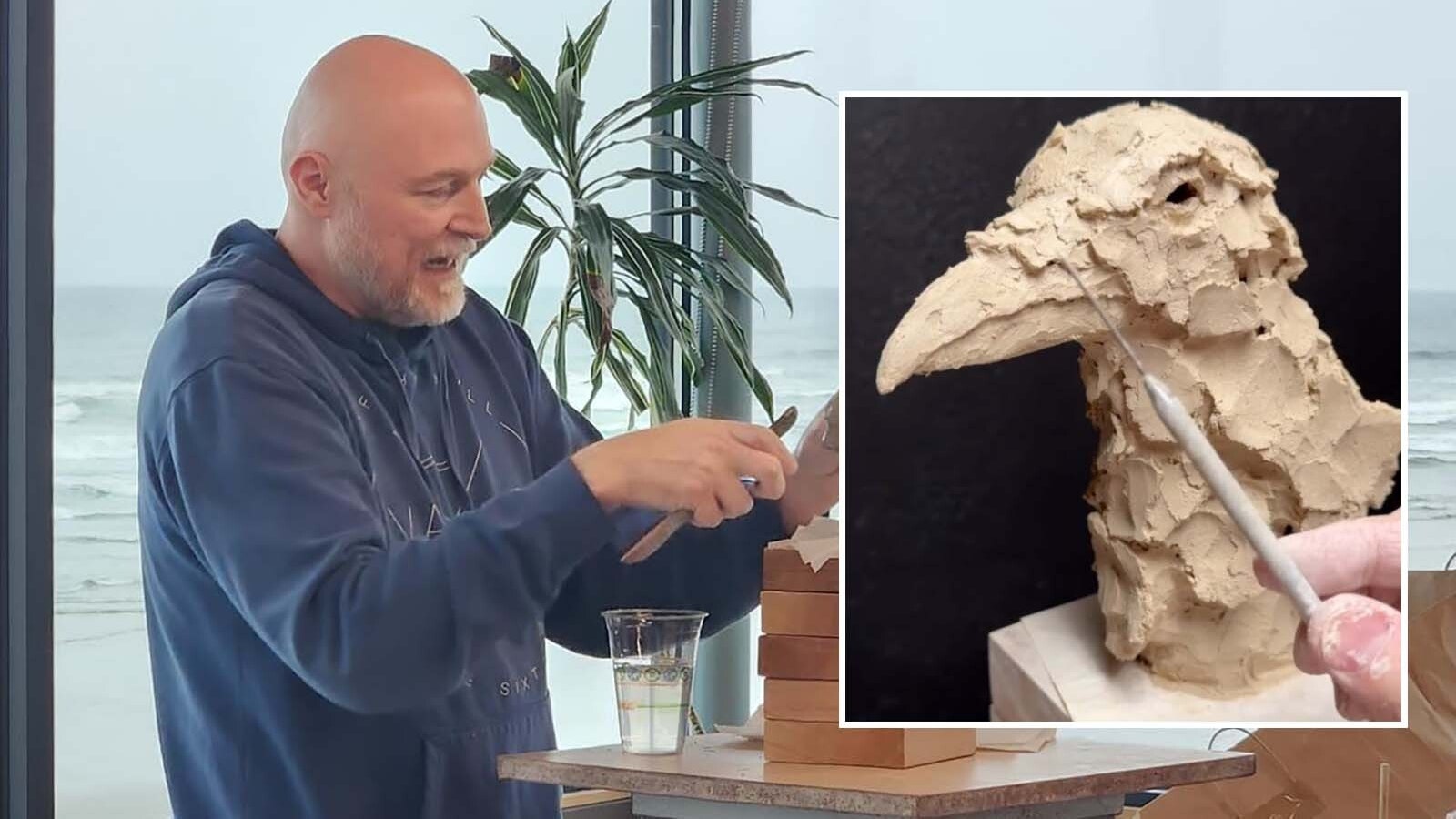Dinosaurs are big business in the 21st century, and one of the best dinosaur sites in the world just outside Medicine Bow, Wyoming, is still producing some of the best-preserved, and potentially best-selling, specimens ever found.
In December, the investment platform Rally announced it was selling shares of a Stegosaurus skeleton still being excavated in Wyoming. Investors could buy Stegosaurus shares for $68.75 each, ensuring them a percentage of the profit when the skeleton is finally sold.
“The 40,000 shares we made available sold out in 18 minutes,” said Thomas Lindgren, president of GeoDecor and one of the paleontologists excavating the Stegosaurus. “They own 20% of the dinosaur right now, so 20% of whatever it sells for will go to the shareholders.”
Apex, a Stegosaurus specimen found in Colorado, sold for nearly $45 million at a Sotheby’s auction in July 2024. It was the highest-price fossil in history by a significant margin.
The Stegosaurus skeleton Lindgren is excavating has already been appraised at $13.75 million, which is the valuation the shares were sold at. If Apex sold for that much, he believes their still-being-excavated Stegosaurus could be worth at least that much.
“We’ve already identified 70% of a complete dinosaur,” he said. “The bone quality is excellent, and we still have more in the ground. We’re very excited.”
Bone Cabin's Bounty
The Stegosaurus is being excavated from Bone Cabin Quarry, a legendary fossil site in the Morrison Formation that preserves the remains of dinosaurs and other prehistoric animals from the Late Jurassic Period.
The site has been periodically dug since it was first discovered in 1897. Paleontologists from the American Museum of Natural History in New York City excavated there for six years, collecting some of the most prized fossils in the museum’s collection, many of which still stand in their exhibit halls today.
Lindgren is very familiar with Bone Cabin Quarry. He and his lifelong friend and business partner Jeffrey Parker have excavated fossils there since 1991.
“Jeff and I have known each other since fifth grade, 65 years ago,” Lindgren said. “It’s hard to believe we’ve been friends that whole time, partnering on a new business and digging dinosaurs in the middle of nowhere near Medicine Bow.”
Over the decades, Lindgren and Parker have found dozens of well-preserved dinosaurs in Bone Cabin Quarry. In addition to the skeletons of famous Jurassic denizens like Allosaurus, Camarasaurus, and Stegosaurus, they have also found the remains of several new dinosaur species, such as Gargoyleosaurus and Tanycolagreus.
“There’s a lot of firsts from Bone Cabin,” Lindgren said. “We found the first raptor, complete crocodile, and one of the only pterosaurs from the Morrison Formation. We found one of the most complete Camarasaurus skeletons ever found. Anything could be out there.”
In 2019, Lindgren and Parker founded Wyoming Dinosaur Discovery LLC to explore Bone Cabin Quarry's full potential. The Stegosaurus is just one of several specimens that have exceeded their expectations, which is saying a lot.
“We’ve verified that we’ve found one of the most complete apatosaurs ever,” he said. “A 65-75-foot dinosaur. And the Barosaurus skeleton we’ve excavated is probably the most scientifically significant specimen of a sauropod ever found.”
Gem Show Centerpiece
The Barosaurus skeleton Lindgren mentioned was the centerpiece of the GeoDecor showroom during the 2025 Tucson Gem and Mineral Show in Tucson, Arizona. The hips and backbones of a massive sauropod, all articulated in life position, were still partially encased in the plaster jackets created to safely remove them from Medicine Bow and ship them to Lindgren's fossil preparation labs in Tucson.
“It's the largest articulated, long-necked dinosaur ever discovered anywhere in the world,” Lindgren said. “When we're finished prepping and mounting it, it will be the largest mounted dinosaur anywhere in the world.”
Lindgren estimates the Barosaurus will be over 90 feet long when fully mounted. Since the end of the dinosaur’s neck is still encased in the ground, he hopes following those bones will lead to another first-of-its-kind discovery: a Barosaurus skull.
Of course, that assumes they’ve found a Barosaurus. Lindgren said a sauropod expert who frequently visits his preparation lab in Tucson believes it could be an entirely new genus and species.
“I've got interest from American, Middle Eastern, and Far East museums interested in acquiring it,” he said. “In order to fund the advancement of commercial and scientific excavations, you have to be able to sell some items.”
No Guarantees
Commercial paleontology has been controversial, to say the least. The plethora of dinosaurs at auction, many found in Wyoming, concern paleontologists who fear the specimens will become inaccessible to future research.
Lindgren understands these concerns and recognizes the scientific value of the specimens that have been and will be excavated from Bone Cabin Quarry. Nevertheless, the only way to learn anything about these dinosaurs is to get them out of the ground, and that can get expensive.
“My life's vocation is to advance the knowledge of science in the way that I can afford to do it,” he said. “When you bring in big crews, paying people a good wage, some operations can cost $50,000 a day. It adds up really fast.”
Some of Lindgren’s discoveries have been donated to museums. When the Gunma Museum in Japan purchased a 75% Camarasaurus skeleton found by Lindgren and his associates in Bone Cabin, it also received two partial Dryosaurus skeletons, a partial Diplodocus skeleton, and a nearly complete skeleton of the Jurassic crocodile Amphicotylus as a donation.
Lindgren hopes that whoever acquires the Barosaurus and Stegosaurus skeletons will allow them to be studied by paleontologists but acknowledged that it isn’t his prerogative once the specimen is sold.
“We can’t guarantee it,” he said. “The laws in this country allow the landowner surface rights, and fossils in the ground are surface rights. We want to sell it, and we're not going to be told where we have to put something.”
Invest In A Donation
Lindgren was the co-director of natural history at Bonham’s Auction House International for 20 years, appraising fossils for auction. He resigned when he founded Wyoming Dinosaur Discovery with Parker and has “never looked back.”
“I've done appraisals for some of the wealthiest people in the world on material they're buying,” he said. “My expertise goes back to field collection and preparation, so I can use all the technologies available to determine what is real, what isn't, what's been restored, and how to restore it.”
Lindgren sees the Stegosaurus shares as the beginning of a trend in the increasingly overlapping worlds of paleontology, high-price auctions, and long-term investments. He recently gave a presentation to a group of hedge-fund managers in Miami, Florida.
“I proposed that rather than investing in artwork or long-term investments, invest in incredible dinosaurs,” he said. “Look at what's happened in the dinosaur market – auctioning a Stegosaurus for $3 million to $40 million. In the art world, you won’t see that sort of change in the market and the valuation for a Picasso or Renoir when you buy it. You're at the ground level of the investment in science for the future.”
Lindgren also took the opportunity to advocate for what dinosaur buyers should do with their multi-million-dollar mounts. If a dinosaur is worth that much at auction, it’d be worth at least that much as a donation.
“Our Stegosaurus could sell for up to $40 million,” he said. “If someone were to buy one and donate it, I can come in as an appraiser and use that as a comparable to put a value for a donation. If they buy it and then donate it, they've got a write-off, which makes it more accessible to science.”
Wyoming’s Dinosaur Wealth
Rally, the investment firm that offered the Stegosaurus shares, is planning to feature the mounted dinosaur as the centerpiece of a pop-up display in New York City in September 2025. Lindgren plans to return to Bone Cabin as soon as possible to recover the exceptionally complete Stegosaurus.
The Stegosaurus sale will be a test of this first-of-its-kind opportunity to become paleontology profit partners. Given the bounty of bones at Bone Cabin, Lindgren believes he’ll be able to offer more of those opportunities in the future.
“I have prep labs in Tucson with crews working 12 months a year,” he said. “I might open another lab in Denver because of the amount and importance of the material we’re pulling out of Bone Cabin. Everything there has been encased in sandstone for 150 million years, and it takes a long time to finish the preparation.”
Lindgren said he’d love to see the Stegosaurus, Barosaurus, and every other incredible dinosaur find a permanent home in Wyoming. If any Cowboy State billionaire buyers are interested in acquiring specimens for that purpose, he’s eager to meet with them and explore the possibilities of keeping Bone Cabin’s exceptional specimens in the prehistoric home where the dinosaurs roamed.
“Anything is possible,” he said. “That's the beauty of science. As you find, you advance the story of the past. What you see, evaluate, and identify adds to that amazing story. That’s how you get the knowledge from the Jurassic, 150 million years ago, and we believe Bone Cabin Quarry is one of the finest Jurassic sites in North America for that purpose.”
Andrew Rossi can be reached at arossi@cowboystatedaily.com.












